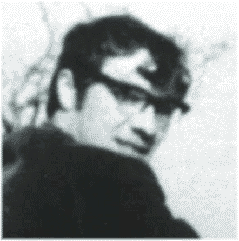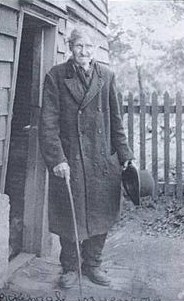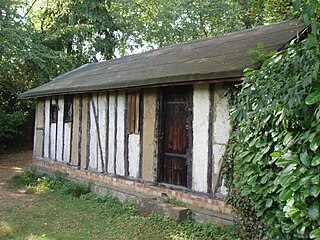Related Research Articles

Gardnerian Wicca, or Gardnerian witchcraft, is a tradition in the neopagan religion of Wicca, whose members can trace initiatory descent from Gerald Gardner. The tradition is itself named after Gardner (1884–1964), a British civil servant and amateur scholar of magic. The term "Gardnerian" was probably coined by the founder of Cochranian Witchcraft, Robert Cochrane in the 1950s or 60s, who himself left that tradition to found his own.

Wicca, also known as "The Craft", is a modern pagan, syncretic, earth-centered religion. Considered a new religious movement by scholars of religion, the path evolved from Western esotericism, developed in England during the first half of the 20th century, and was introduced to the public in 1954 by Gerald Gardner, a retired British civil servant. Wicca draws upon ancient pagan and 20th-century hermetic motifs for theological and ritual purposes. Doreen Valiente joined Gardner in the 1950s, further building Wicca's liturgical tradition of beliefs, principles, and practices, disseminated through published books as well as secret written and oral teachings passed along to initiates.
Alexandrian Wicca or Alexandrian Witchcraft is a tradition of the Neopagan religion of Wicca, founded by Alex Sanders who, with his wife Maxine Sanders, established the tradition in the United Kingdom in the 1960s. Alexandrian Wicca is similar in many ways to Gardnerian Wicca, and receives regular mention in books on Wicca as one of the religion's most widely recognised traditions.

Doreen Edith Dominy Valiente was an English Wiccan who was responsible for writing much of the early religious liturgy within the tradition of Gardnerian Wicca. An author and poet, she also published five books dealing with Wicca and related esoteric subjects.

Edith Rose Woodford-Grimes (1887–1975) was an English Wiccan who achieved recognition as one of the faith's earliest known adherents. She had been a member of the New Forest coven which met during the late 1930s and early 1940s, and through this became a friend and working partner of Gerald Gardner, who would go on to found the Gardnerian tradition with her help. Widely known under the nickname of Dafo, Woodford-Grimes' involvement in the Craft had largely been kept a secret until it was revealed in the late 1990s, and her role in the history of Wicca was subsequently investigated by historians.

The New Forest coven were an alleged group of pagan witches who met around the area of the New Forest in southern England during the early 20th century. According to his own claims, in September 1939, a British occultist named Gerald Gardner was initiated into the coven and subsequently used its beliefs and practices as a basis from which he formed the tradition of Gardnerian Wicca. Gardner described some of his experiences with the coven in his published books Witchcraft Today (1954) and The Meaning of Witchcraft (1959) although on the whole revealed little about it, saying he was respecting the privacy of its members. Meanwhile, another occultist, Louis Wilkinson, corroborated Gardner's claims by revealing in an interview with the writer Francis X. King that he too had encountered the coven and expanded on some of the information that Gardner had provided about them. According to Gardner, the faith they followed was the Witch-Cult, a supposed pagan religion that had survived in secret after the Christianization of Europe. This was in keeping with the now-discredited theories of Margaret Murray and her supporters.

Philip Heselton is a retired British conservation officer, a Wiccan initiate, and a writer on the subjects of Wicca, Paganism, and Earth mysteries. He is best known for two books, Wiccan Roots: Gerald Gardner and the Modern Witchcraft Revival and Gerald Gardner and the Cauldron of Inspiration, which gather historical evidence surrounding the New Forest coven and the origins of Gardnerian Wicca.

Robert Cochrane, who was born as Roy Bowers, was an English occultist who founded the tradition of Witchcraft known as The Clan of Tubal Cain.
The history of Wicca documents the rise of the Neopagan religion of Wicca and related witchcraft-based Neopagan religions. Wicca originated in the early 20th century, when it developed amongst secretive covens in England who were basing their religious beliefs and practices upon what they read of the historical witch-cult in the works of such writers as Margaret Murray. It was subsequently founded in the 1950s by Gardner, who claimed to have been initiated into the Craft – as Wicca is often known – by the New Forest coven in 1939. Gardner's form of Wicca, the Gardnerian tradition, was spread by both him and his followers like the High Priestesses Doreen Valiente, Patricia Crowther and Eleanor Bone into other parts of the British Isles, and also into other, predominantly English-speaking, countries across the world. In the 1960s, new figures arose in Britain who popularized their own forms of the religion, including Robert Cochrane, Sybil Leek and Alex Sanders, and organizations began to be formed to propagate it, such as the Witchcraft Research Association. It was during this decade that the faith was transported to the United States, where it was further adapted into new traditions such as Feri, 1734 and Dianic Wicca in the ensuing decades, and where organizations such as the Covenant of the Goddess were formed.

In the neopagan religion of Wicca a range of magical tools are used in ritual practice. Each of these tools has different uses and associations and are commonly used at an altar, inside a magic circle.

Vivianne Crowley is an English writer, university lecturer, psychologist, and a High Priestess and teacher of the Wiccan religion.

George Pickingill was an English farm labourer who lived and worked in the village of Canewdon in the eastern English county of Essex. Widely considered to be a cunning man, or vocational folk magician, he reportedly employed magical means to offer cures for ailments and to locate lost property, although was also alleged to have threatened to place curses on people.

Neopagan witchcraft, sometimes referred to as The Craft, is an umbrella term for some neo-pagan traditions that include the practice of magic. These traditions began in the mid-20th century, and many were influenced by the witch-cult hypothesis; a now-rejected theory that persecuted witches in Europe had actually been followers of a surviving pagan religion. The largest and most influential of these movements was Wicca. Some other groups and movements describe themselves as "Traditional Witchcraft" to distinguish themselves from Wicca.
Georgian Wicca is a tradition, or denomination, in the neopagan religion of Wicca. In its organisation, it is very similar to British Traditional Wicca groups such as Gardnerian Wicca, however, it does not trace its initiatory line to one of the old English covens.
Cochrane's Craft, also known as Cochranianism and The Clan of Tubal Cain, is a religious movement similar to Wicca that considers itself a form of Traditional Witchcraft. It was founded in 1951 by the English witch Robert Cochrane, who himself claimed to have been taught in the tradition by some of his elderly family members, a claim that is disputed by historians such as Ronald Hutton and Leo Ruickbie.

The Bricket Wood coven, or Hertfordshire coven is a coven of Gardnerian witches founded in the 1940s by Gerald Gardner. It is notable for being the first coven in the Gardnerian line, though having its supposed origins in the pre-Gardnerian New Forest coven. The coven formed after Gardner bought a plot at the Fiveacres Country Club, a naturist club in the village of Bricket Wood, Hertfordshire, southern England, and met within the club's grounds. It played a significant part in the history of the neopagan religion of Wicca.

Raymond Howard was an English practitioner of the modern Pagan new religious movement of Wicca. He promoted his tradition, known as the Coven of Atho, through a correspondence course established in the early part of the 1960s.
In Modern English, the term Wicca refers to Wicca, the religion of contemporary Pagan witchcraft. It is used within the Pagan community under competing definitions. One refers to the entirety of the Pagan Witchcraft movement, while the other refers explicitly to traditions included in what is now called British Traditional Wicca.

Enchanted Feminism: The Reclaiming Witches of San Francisco is an anthropological study of the Reclaiming Wiccan community of San Francisco. It was written by the Scandinavian theologian Jone Salomonsen of the California State University, Northridge and first published in 2002 by the Routledge.

Living Witchcraft: A Contemporary American Coven is a sociological study of an American coven of Wiccans who operated in Atlanta, Georgia, US, during the early 1990s. It was co-written by the sociologist Allen Scarboro, psychologist Nancy Campbell and literary critic Shirley Stave and first published by Praeger in 1994. Although largely sociological, the study was interdisciplinary, and included both insider and outsider perspectives into the coven; Stave was an initiate and a practicing Wiccan while Scarboro and Campbell remained non-initiates throughout the course of their research.
References
- Notes
- Footnotes
- ↑ Ryall 1993. p. 01-02.
- ↑ Ryall 1993. p. 05.
- ↑ Ryall 1993. p. 01-11.
- ↑ Hutton 1999. p. 302.
- ↑ "Mileham - the Age 27 April 1994". The Age. 27 April 1994. p. 7.
- Bibliography
- Hutton, Ronald (1999). The Triumph of the Moon: A History of Modern Pagan Witchcraft . New York: Oxford University Press. ISBN 0-19-820744-1.
- Ryall, Rhiannon (1993). West Country Wicca: A Journal of the Old Religion. Chievely, Berkshire: Capall Bann. ISBN 9781898307020.
